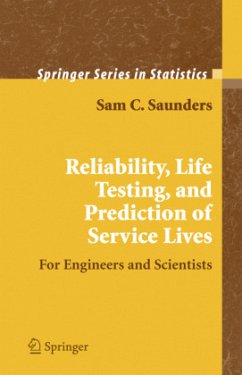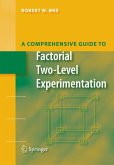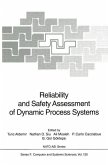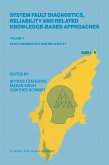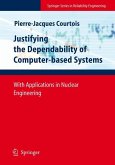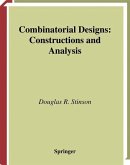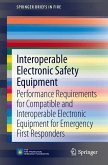The prerequisite for reading this text is a calculus based course in Probability and Mathematical Statistics, along with the usual curricularmathematical requi- ments for every science major. For graduate students from disciplines other than mathematical sciences much advantage, viz., both insight and mathematical - turity, is gained by having had experience quantifying the assurance for safety of structures, operability of systems or health of persons. It is presumed that each student will have some familiarity with Mathematica or Maple or better yet also have available some survival analysis software such as S Plus or R, to handle the computations with the data sets. This material has been selected under the conviction that the most practical aid any investigator can have is a good theory. The course is intended for p- sons who will, during their professional life, be concerned with the 'theoretical' aspects of applied science. This implies consulting with industrial mathema- cians/statisticians' lead engineers in various fields, physcists, chemists, material scientists and other technical specialists who are collaborating to solve some d- ficult technological/scientific problem. Accordingly, there are sections devoted to the deportment of applied mathematicians during consulting. This corresponds to the 'bedside manner' of physicians and is a important aspect of professionalism.
From the reviews:
"The book authored by one of the most distinguished scientists in the area of reliability theory ... . It is a highly recommendable state-of-the-art description of the field. ... Essentially the book is a collection of chapters summarizing the state of the art in reliability. ... The book is an excellent introduction into the reliability theory. ... I recommend this book strongly ... ." (Goetz Uebe, Advances in Statistical Analysis, Vol. 91 (4), 2007)
"This text is aimed at graduate scientists and engineers and intends to provide a theoretical underpinning to modelling reliability and the analysis of life data. ... the majority of the book concerns the mathematical development of the area that requires a background in probability and mathematical statistics including measures." (Peter Watts Jones, Zentralblatt MATH, Vol. 1120 (22), 2007)
"This book addresses 'theoretical', meaning mathematical and statistical, aspects of reliability and failure time analysis. The presentation is ... idiosyncratic in its topic selection and ordering of material. ... It does, however, offer valuable insights and ... thought-provoking material. ... The book also has a great many quotes from notables ... . These are entertaining and educational ... . Overall, I enjoyed this book and recommend it to anyone interested in statistics for reliability and, more broadly, engineering science." (Jerry F. Lawless, International Statistical Review, Vol. 75 (2), 2007)
"This book reviews in an elegant and practical framework some of the main mathematical concepts and results of the modern theory of reliability. The author takes care to explain the intuitive value of and to comment on the practical importance of the mathematical models. It seems ... to offer available mathematical information in order to teach the reader to be competent to make valid service-life predictions. ... The reading of the book is pleasant. The author evidencesconsiderable erudition and great experience in the field." (Eugen Paltanea, Mathematical Reviews, Issue 2008 h)
"This book gives detailed and technical presentations of a broad array of reliability models and methods. ... the book is likely better suited as a reference book or graduate-level textbook. ... Overall, this book is a valuable collection of mathematical and probability methods for studying a variety of reliability and service-life models. With it, the reader will be able to build a solid foundation for the theoretical aspects of this interesting and increasingly important topic." (Christine M. Anderson-Cook, Journal of the American Statistical Association, Vol. 103 (482), June, 2008)
"The book is intended for engineers and scientists, and the author provides a review section on the essentials of probability and statistics to facilitate their reading. ... this is a nice book. It engages the reader, has a reasonably good coverage of the standard material in reliability, and is a valuable source of reference for mathematical technologies relevant to reliability. ... it will remain handy on my bookshelf for amusement, inspiration, and enlightenment." (Nozer D. Singpurwalla, SIAM Review, Vol. 52 (1), 2010)
"The book authored by one of the most distinguished scientists in the area of reliability theory ... . It is a highly recommendable state-of-the-art description of the field. ... Essentially the book is a collection of chapters summarizing the state of the art in reliability. ... The book is an excellent introduction into the reliability theory. ... I recommend this book strongly ... ." (Goetz Uebe, Advances in Statistical Analysis, Vol. 91 (4), 2007)
"This text is aimed at graduate scientists and engineers and intends to provide a theoretical underpinning to modelling reliability and the analysis of life data. ... the majority of the book concerns the mathematical development of the area that requires a background in probability and mathematical statistics including measures." (Peter Watts Jones, Zentralblatt MATH, Vol. 1120 (22), 2007)
"This book addresses 'theoretical', meaning mathematical and statistical, aspects of reliability and failure time analysis. The presentation is ... idiosyncratic in its topic selection and ordering of material. ... It does, however, offer valuable insights and ... thought-provoking material. ... The book also has a great many quotes from notables ... . These are entertaining and educational ... . Overall, I enjoyed this book and recommend it to anyone interested in statistics for reliability and, more broadly, engineering science." (Jerry F. Lawless, International Statistical Review, Vol. 75 (2), 2007)
"This book reviews in an elegant and practical framework some of the main mathematical concepts and results of the modern theory of reliability. The author takes care to explain the intuitive value of and to comment on the practical importance of the mathematical models. It seems ... to offer available mathematical information in order to teach the reader to be competent to make valid service-life predictions. ... The reading of the book is pleasant. The author evidencesconsiderable erudition and great experience in the field." (Eugen Paltanea, Mathematical Reviews, Issue 2008 h)
"This book gives detailed and technical presentations of a broad array of reliability models and methods. ... the book is likely better suited as a reference book or graduate-level textbook. ... Overall, this book is a valuable collection of mathematical and probability methods for studying a variety of reliability and service-life models. With it, the reader will be able to build a solid foundation for the theoretical aspects of this interesting and increasingly important topic." (Christine M. Anderson-Cook, Journal of the American Statistical Association, Vol. 103 (482), June, 2008)
"The book is intended for engineers and scientists, and the author provides a review section on the essentials of probability and statistics to facilitate their reading. ... this is a nice book. It engages the reader, has a reasonably good coverage of the standard material in reliability, and is a valuable source of reference for mathematical technologies relevant to reliability. ... it will remain handy on my bookshelf for amusement, inspiration, and enlightenment." (Nozer D. Singpurwalla, SIAM Review, Vol. 52 (1), 2010)

